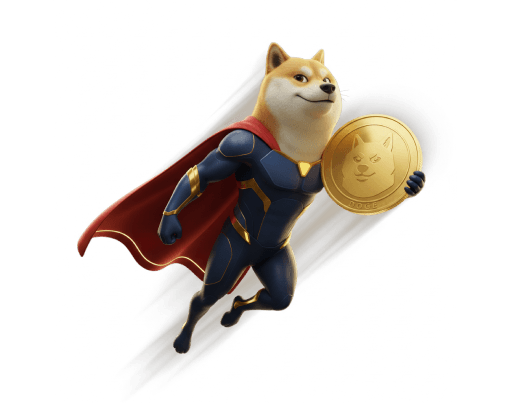Will Dogecoin Go Back Up?

Introduction: Navigating the Dogecoin Dilemma
The question of Dogecoin's future is one that divides the investment community. For some, it remains a cultural phenomenon with untapped potential; for others, a speculative bubble waiting to burst. To ask 'Will Dogecoin go back up?' is to wade into one of cryptocurrency's most contentious debates. This guide moves beyond simplistic price predictions to provide a rational framework for analysis. We will dissect the bullish arguments, weigh the significant bearish risks, and analyse the critical external factors that will ultimately shape Dogecoin's trajectory, empowering you to form your own informed perspective.
The Bull Case: Why Dogecoin Still Has Bite
Despite its origins as a joke, Dogecoin's staying power is undeniable. Its potential for recovery is built on several key pillars that sceptics often overlook.
- Unparalleled Brand Recognition: In the crowded crypto space, Dogecoin is a household name. This immense brand awareness gives it a marketing advantage that newer, more technologically advanced projects can only dream of. It serves as a common entry point for new investors, ensuring a consistent flow of interest.
- An Unwavering Community: The 'Doge Army' is more than a group of investors; it's a powerful cultural movement. This loyal and highly engaged community provides a solid social floor for the coin, championing its adoption, creating content, and fostering a sense of shared purpose that has proven resilient through multiple market cycles.
- Growing Utility as a Payment Method: Once purely speculative, Dogecoin is gaining traction for microtransactions. Its low transaction fees and fast processing times make it a viable option for small payments and tipping online content creators. Major brands have begun accepting DOGE, a trend that, if it continues, could provide the fundamental use case it has long needed.
The Bear Case: Significant Hurdles on the Path to Recovery
A balanced analysis requires a sober look at the significant challenges facing Dogecoin. These inherent risks are formidable and must be considered by any potential investor.
- Inflationary by Design: Unlike Bitcoin's fixed supply, over five billion new DOGE are mined every year, with no upper limit. This constant inflation can exert downward pressure on the price, as the increasing supply must be met with ever-growing demand to maintain its value.
- Extreme Volatility and Hype-Dependence: Dogecoin's price is notoriously susceptible to social media trends and celebrity endorsements. While this can trigger spectacular rallies, it also leads to gut-wrenching crashes when the hype subsides. This makes it a profoundly unstable asset, driven more by sentiment than by fundamental value.
- Regulatory Scrutiny: As governments worldwide formulate regulations for digital assets, 'memecoins' like Dogecoin may face particular scrutiny. Regulators could classify them as highly speculative instruments, potentially limiting their accessibility on mainstream exchanges or imposing punitive taxes, which would dampen investor enthusiasm.
Critical Factors Shaping Dogecoin's Trajectory
Dogecoin's fate is not decided in a vacuum. Its future price will be a product of several powerful internal and external forces.
Market Sentiment & Social Trends: As a sentiment-driven asset, the general mood of the crypto market is paramount. A broad 'bull run' tends to lift all boats, including Dogecoin. Conversely, in a 'bear market', speculative assets are often the first to be sold off. Monitoring social media activity and news flow remains crucial for gauging short-term price movements.
Macroeconomic Conditions: Wider economic factors play a vital role. High-interest rate environments tend to draw capital away from high-risk assets like crypto and towards safer, interest-bearing investments. Conversely, lower interest rates and economic stimulus can increase investor appetite for risk, favouring assets like DOGE.
Technical & On-Chain Analysis: While fundamentals are key, technical indicators matter. Analysts watch key support levels, where buying pressure has historically stepped in, and resistance levels, where selling has previously occurred. Furthermore, on-chain activity—such as the number of active wallets and transaction volumes—can provide clues about network health and investor engagement.
Conclusion: A Forward-Looking Perspective for Investors
So, will Dogecoin go back up? The honest answer is that nobody can say for certain. The bull case rests on its formidable brand, its passionate community, and its nascent utility. The bear case is equally compelling, rooted in its inflationary tokenomics, extreme volatility, and the ever-present regulatory risk. Its future is not a simple question of yes or no, but rather a complex interplay of these competing forces.
The rational investor should not look for a definitive prediction but instead watch for key developments. Will major retailers accelerate its adoption as a payment method? Will its community's enthusiasm translate into sustainable development? How will regulators treat it? The answers to these questions, viewed against the backdrop of the global economy, will ultimately determine whether Dogecoin's best days are behind it or still yet to come.
